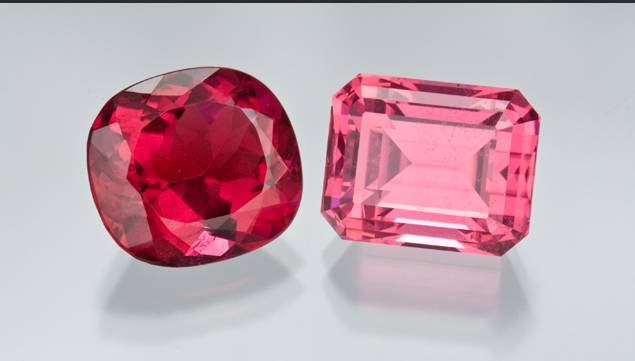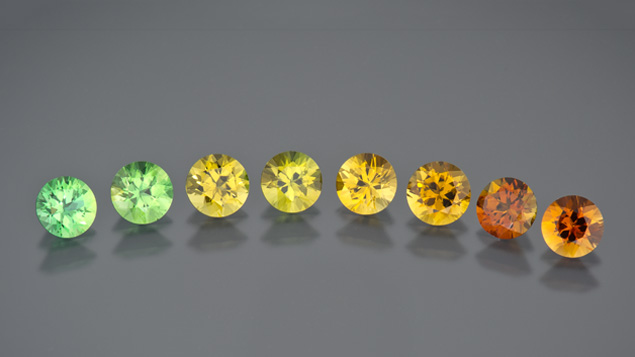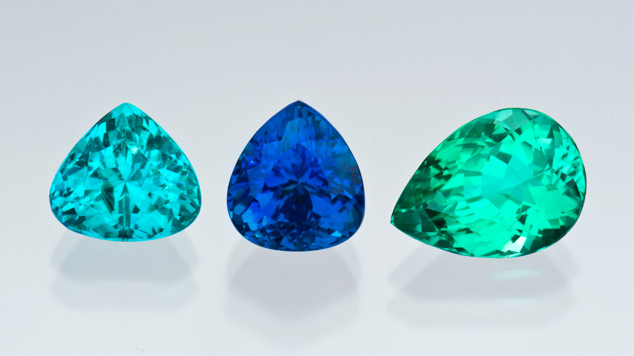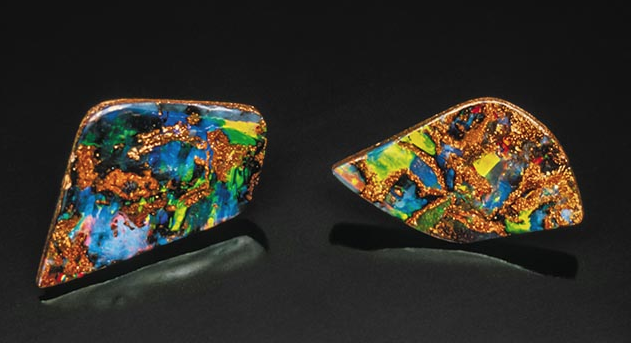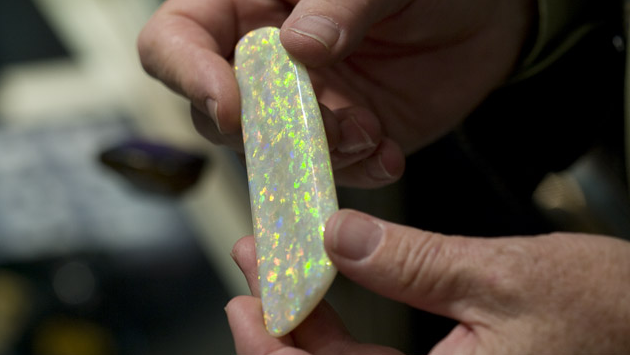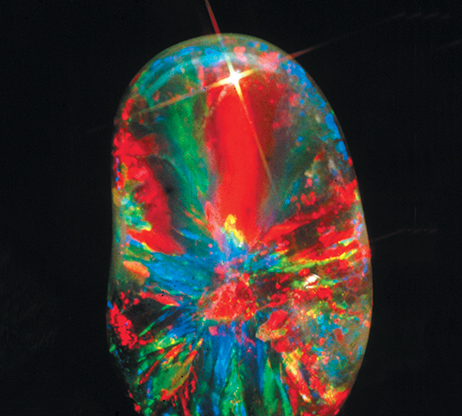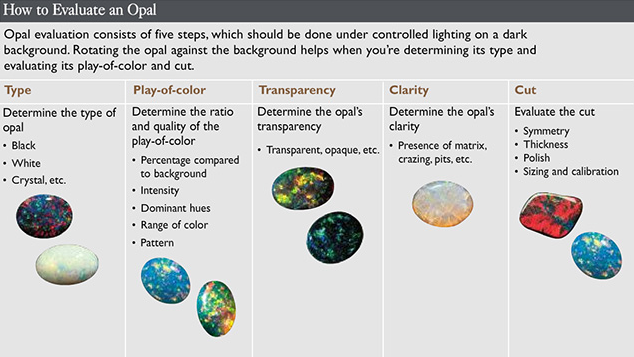Two Birthstones For October
Tourmaline and Opal
We have found the gemological institute of America does an excellent job describing each birthstone as well as the history and myths behind each one.
The following article is from GIA: Click here for more Photos and Information
TOURMALINE
"October babies have the pleasure of enjoying two birthstones to commemorate their birthdays –tourmalines and opals. This post is all about the October birthstone, tourmalines.
The word tourmaline comes from Sinhalese word turmali, which means “mixed.” Tourmalines exist in more colors and color combinations than any other gemstone in the world. Perhaps this is why ancient mystics believed tourmaline could inspire artistic expression – it has a color palette for every mood. What color tourmaline best fits your mood?
Pink and green tourmalines are widely available and affordable. More expensive and rare tourmalines are blue indicolite, red rubellite, Paraiba (neon blues to greens) and an intense green tourmaline found in Kenya and Tanzania called the chrome tourmaline. Tourmalines are most commonly found in Brazil, but also through Africa, the Middle East, and even in California and Maine in the United States.
Tourmalines grow in long, pencil-like crystals so are more commonly cut into an emerald shape stone. Tourmaline ranks 7 to 7.5 on the Mohs scale, which is relatively hard and suitable to everyday wear. How do you clean a tourmaline? Easy! Clean with mild dish soap and a toothbrush, gently scrubbing where dust might collect. Do not use an ultrasonic cleaner with Rubellite and Paraiba tourmalines." -GIA
Opal
Article By: GIA Click Link Here To View Full Article and More Photos
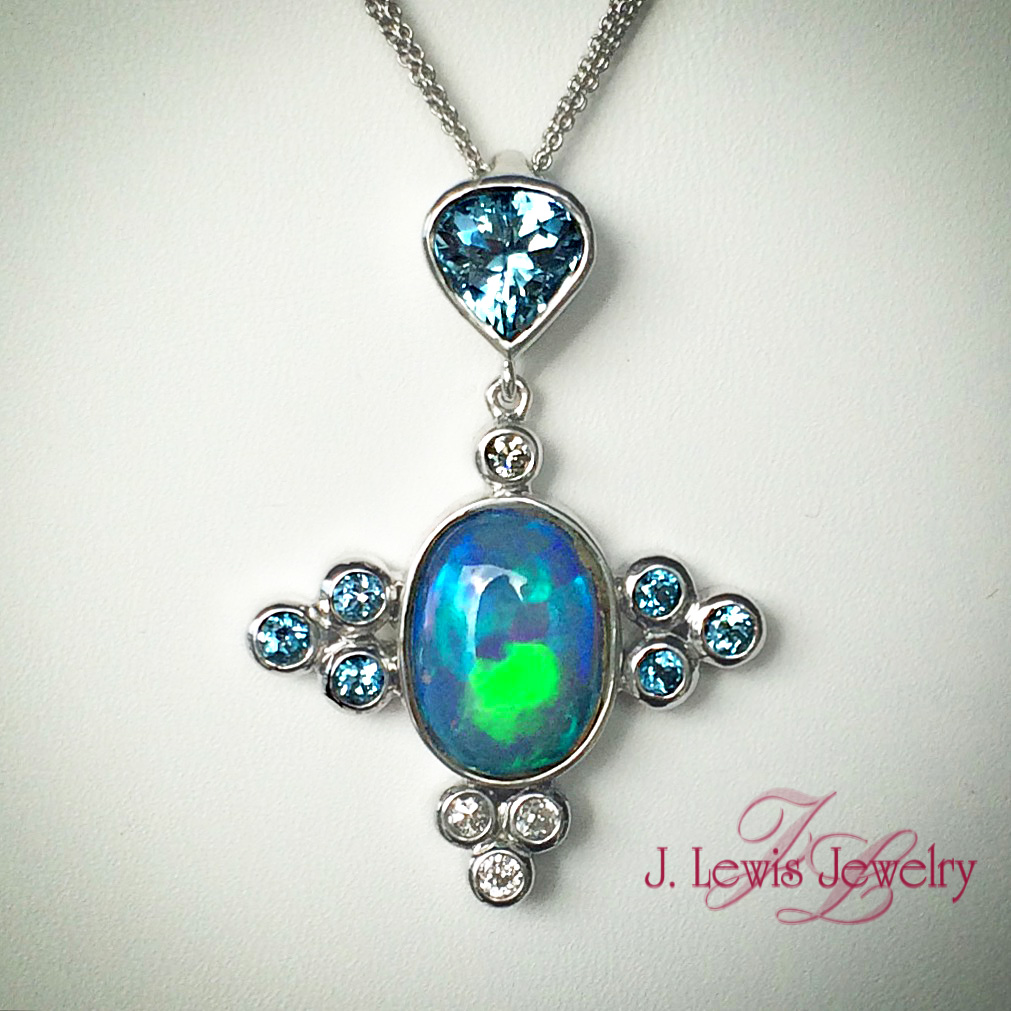
"Opal’s name originated in ancient Rome where it was called “opalus” which was synonymous with “precious stone”. Opals are valued for their unique shifting colors in rainbow hues – a phenomenon gemologists call “play of color”. What causes this?
Play-of-color occurs because opal is made up of sub-microscopic spheres stacked in a grid-like pattern, like layers of ping-pong balls in a box. This structure breaks up light into spectral colors. The colors you see depend on the sizes of the spheres. Those approximately 0.1 micron (one ten-millionth of a meter) in diameter produce violet. Spheres that are about 0.2 microns in size produce red. Those in between produce intermediate hues.
The ancient Greeks believed opals gave their owners the gift of prophesy and guarded them from disease. And throughout most of history opal has been regarded as the luckiest and most magical of all gems because it can show all colors. Once, it was thought to have the power to preserve the life and color of blonde hair (!).
Opals are more commonly mined in Australia, but are also found in Mexico, Brazil, Ethiopia and other countries Although experts divide gem opals into many different categories, the main types are:
- White opal – translucent to semi-translucent with play-of-color against a white or light gray body color.
- Black opal – translucent to opaque with play-of-color against a black or other dark body color. The market supply of this type is extremely limited, and so it is considered the most valuable.
- Fire Opal – transparent to translucent with brown, yellow, orange, or red body color. This material, which often does not show play-of-color, is also known as “Mexican opal,” “gold opal,” or “sun opal.”
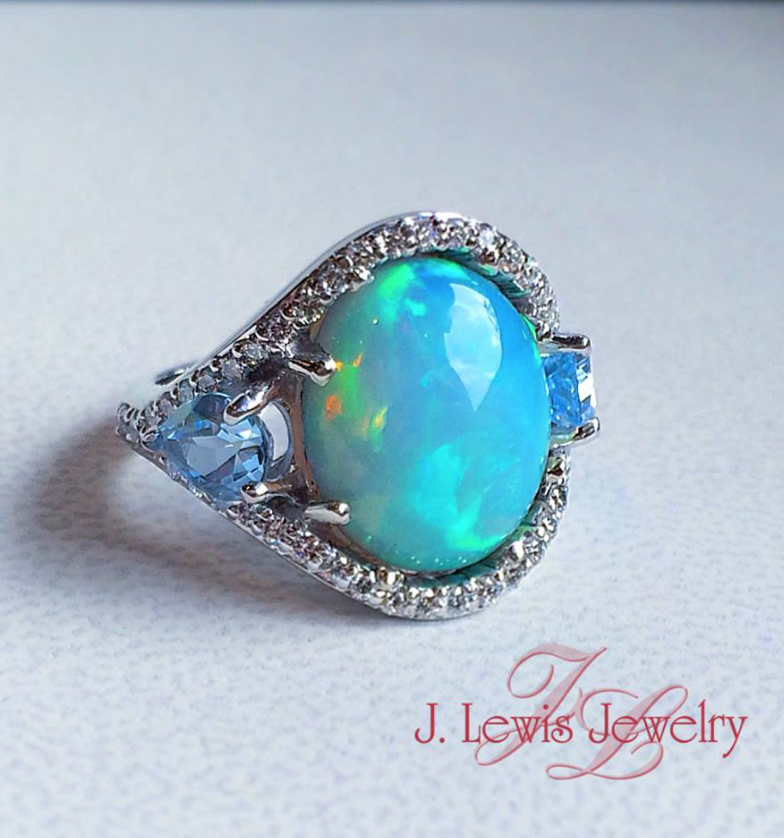
Pieces of white or black opal that are too thin to use alone often become part of opal doublets or triplets. In these assembled stones, a sliver of opal is cemented, usually with black adhesive that dramatizes the play-of-color, to a backing such as chalcedony, glass, or plastic. A doublet consists of two pieces (the opal and the backing), while a triplet also has a protective top made of rock crystal quartz or colorless glass.
Opals are a 6 on Mohs scale of hardness and are softer than other gemstones so should be worn and stored carefully to prevent scratching and protect them from hard blows. Opals are generally stable to light, but heat from intense light can cause fracturing (known as crazing). They should not be exposed to acids or caustic alkalis and loss of moisture and crazing can result from storage in airtight containers, such as safe deposit boxes. How do you clean an opal? Easy – use warm soapy water (made with mild dish soap) and a soft bristled toothbrush . But no ultrasonic or steam cleaning, please."-GIA






